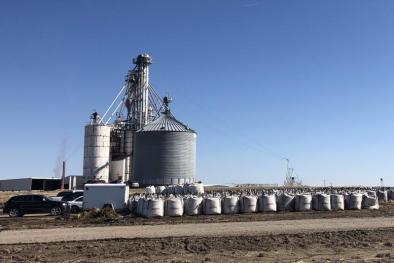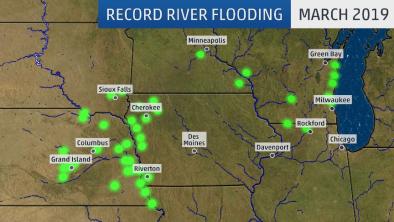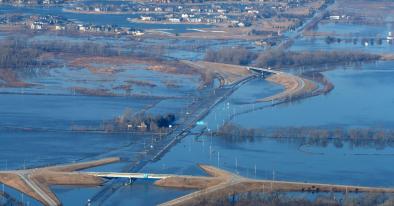Science Source
Are climatic or land cover changes the dominant cause of runoff trends in the Upper Mississippi River Basin?
- States that the Upper Mississippi River Basin (UMRB) has experienced a remarkable agricultural extensification since the mid‐1800s
- Hydroclimatological monitoring in the 20th century also reveals positive annual precipitation and runoff trends in the UMRB
- States that while several studies have proposed land use/land cover (LULC) change as the primary cause of runoff increase, little is known about the dominant controls of hydrologic change in the UMRB
- Uses a macroscale hydrology model to assess the hydrologic implications of climate and LULC changes between 1918 and 2007
- Modeling results, corroborated with hydroclimatologic data analysis, emphasized climate change as the dominant driver of runoff change in the UMRB
- Finds that, at local scales, modeled annual runoff decreased (increased) by up to 9% (5%) where grasslands (forests) were replaced by croplands
- Finds that artificial field drainage amplified annual runoff by as much as 13%
- Concludes that these findings are critical for water and nitrogen management in the UMRB under change
Related Content
Headline

Mar 25, 2019 | U.S.
Floods shut nearly a sixth of U.S. ethanol production
Headline

Mar 22, 2019 | The Weather Channel
Record Flooding in Nebraska, Iowa, South Dakota, Wisconsin, Minnesota and Illinois Follows Snowmelt, Bomb Cyclone
Headline

Mar 22, 2019 | New York Times
Why Is There Flooding in Nebraska, South Dakota, Iowa and Wisconsin?
Science Source
| Journal of Climate
The Effect of Global Warming on Severe Thunderstorms in the United States


